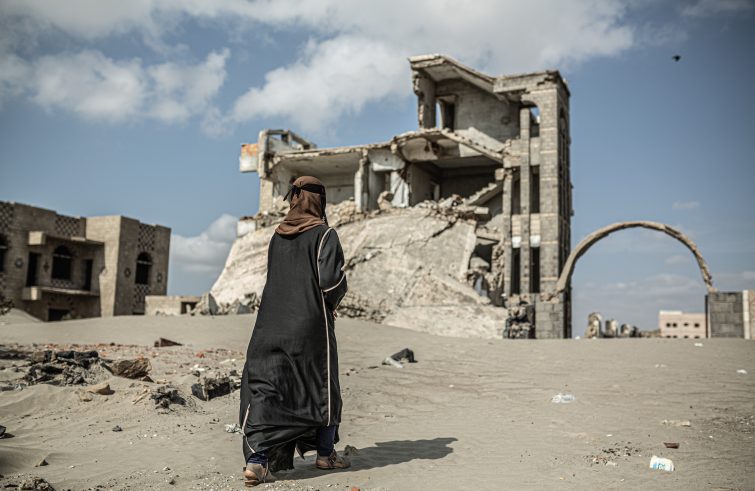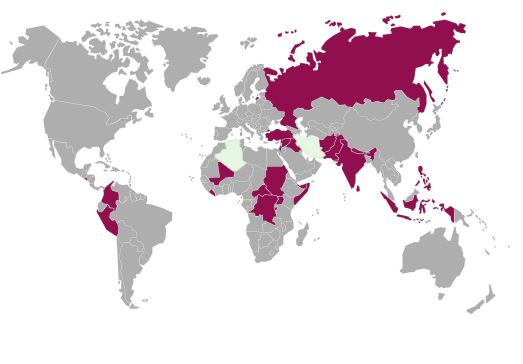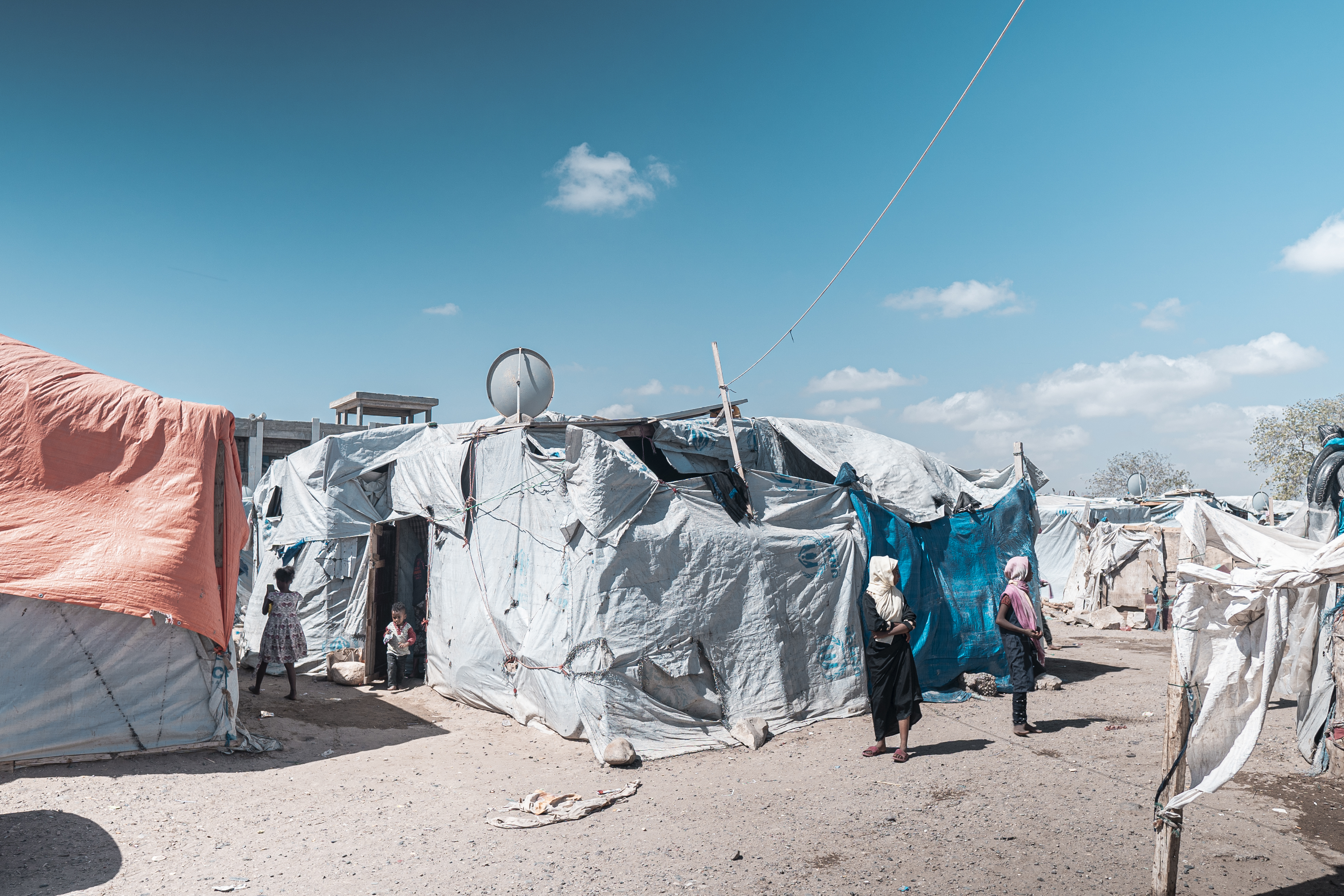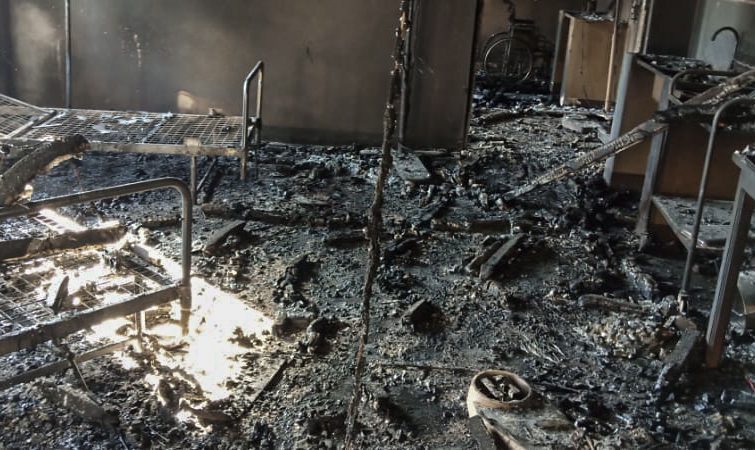
A world without peace. Syria, Yemen, South Sudan, the Central African Republic, northern Mozambique (Cabo Delgado), North Kivu and Ituri in the Democratic Republic of Congo, the civil war in Ethiopia’s Tigray. There are many ongoing wars and conflicts in the world today. There were at least 22 high-intensity wars in 2021, six more than the previous year, when there were 15 (Caritas Italy data). Sadly, they became 23 since the outbreak of the war in Ukraine. However, when considering long-standing armed conflicts and violent escalations, the figure rises to 359 conflicts in 2020, including the longstanding ongoing conflict between Israelis and Palestinians. The number of people needing humanitarian aid had risen by 40 per cent in 2020-2021, with a total of 235 million people affected. The conflict in Ukraine caused an additional 12 million people affected by the conflict inside the country – including 6.5 million internally displaced persons – with more than 4.2 million people having fled abroad. An overview of some of the rarely mentioned ongoing armed conflicts in the world.
The conflict in Syria entered its 11th year and has deep roots. During the 2011 Arab Spring, the government of Bashar al-Assad carried out multiple strikes against civilian targets under its war strategy against Free Syrian Army rebels. Some 500,000 people were killed. Over 13 million people have fled the country or have been internally displaced. Sixty per cent of the population suffer from food insecurity and hunger. Food prices have increased by more than 200 per cent in the past year. A total of 14.6 million people are in need of humanitarian assistance. Of these, 6.5 million children require humanitarian assistance, with 2.5 million girls and boys not attending school and an estimated 800,000 malnourished children.
Yemen
The conflict in Yemen erupted on March 26, 2015. It is one of the largest humanitarian crises in the world today, with 17.4 million people facing starvation. A total of 19 are projected to go hungry by the end of the year. All need humanitarian assistance. In the 7-year war between the Saudi-backed government coalition and pro-Iranian Houthi rebels, an estimated 24,600 airstrikes have destroyed 40% of city housing, with over 14,500 civilians killed since 2017. The war has forced 4 million people to abandon their homes in search of safety – with 1 million people presently in Marib Governorate. It was reported a few days ago that Yemen’s president, Abd Rabbo Mansour Hadi, has handed powers to a new governing council tasked with negotiating a political solution to end the conflict. Hadi’s decision follows the enactment of a two-month ceasefire on April 2, brokered by the UN and agreed by the parties.
A major crisis is unfolding in Ethiopia’s disputed western Tigray region. A ceasefire was announced in March, but severe famine and difficulties in accessing humanitarian aid risk leaving millions of people without food. Ethiopian federal forces and the Tigray People’s Liberation Front (TPLF) started fighting in November 2020, with armed strife spreading to other regions in northern Ethiopia since July 2021. Human rights organizations denounced a campaign of ethnic cleansing resulting in massacres, extrajudicial executions, sexual violence and arbitrary arrests by government forces, allied militias and Eritrean armed forces allied with those of Ethiopia. The UN Office for the Coordination of Humanitarian Affairs (OCHA) reported on December 2, 2021, that as many as 1.200,000 Tigreans had been displaced since the outbreak of the conflict. A UN report issued on 9 December indicated that there had been over 10,000 new displaced persons in the period November 25 – December 1. Some 1.7 million children across Tigray have been without school education for the past two years.
Mozambique
In Northern Mozambique’s Cabo Delgado province, the local population has been subjected to violent attacks by jihadist-led groups seeking to control resources since 2017, resulting in thousands of deaths, casualties and some 800,000 displaced persons. Over 20 attacks were reported in the first weeks of 2022 in four villages in Meluco and Southern Macomia districts, with 2,800 houses damaged or burnt down. More than 14,000 people have been forced to leave their homes since the end of January due to the escalating conflict. They are still seeking shelter and basic necessities.
South Sudan
South Sudan is facing its worst food security crisis since its 10 years of independence, which rapidly erupted into five years of civil war until a peace process was initiated a year and half ago with minimal progress to date. A recent report by Caritas Italy found that the humanitarian situation remains critical, with some 8.3 million people in need, 1.4 million malnourished children, 1.62 million internally displaced persons (IDPs) and a significant increase in the number of refugees and asylum seekers, totalling 2.3 million.
Democratic Republic of Congo
Ituri is one of the hardest-hit provinces in DR Congo, along with North Kivu, South Kivu and Tanganyika. Entire families – including children – have been hacked to death with machetes, healthcare facilities and schools have been looted and entire villages set on fire. Combat attacks throughout the eastern part of the country have forced many communities to flee. Even Doctors Without Borders was forced to suspend its work in two areas of Ituri a month ago, owing to increasing insecurity. There are currently 5.2 million displaced persons in DR Congo, more than in any other country but Syria, according to the UN. The ongoing fighting has driven 1.6 million people from their homes in the first six months of 2020 alone. It is estimated that more than 3 million children have been displaced in eastern DR Congo. More than 8 million people face acute food insecurity.
Mali
Jihadists in Mali prevent farmers from harvesting their rice fields by burning their fields and attacking the peasants trying to harvest their crops. ACS (Aid to the Church in Need) reported a very unstable situation in the region of Ségou, in central Mali, due to fighting between local militias and the self-defence Donso Hunters, as well as jihadists. According to local sources, there is a third unidentified armed group, which is neither part of the jihadists nor of the Donso Hunters. UNHCR data show that the number of internally displaced Malians exceeded 400,000 at the end of September 2021. Refugees include both Muslims and Christians, although the number of Muslims exceeds the number of Christians by far, as almost 90 per cent (88.7 per cent) of Mali’s population is Islamic.












